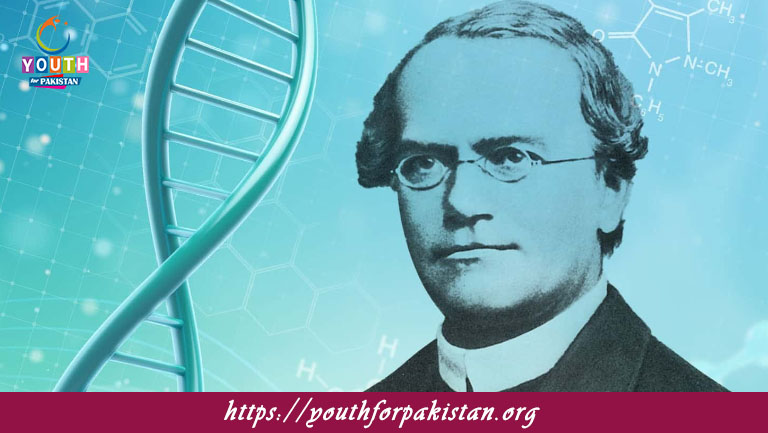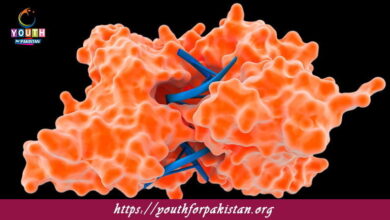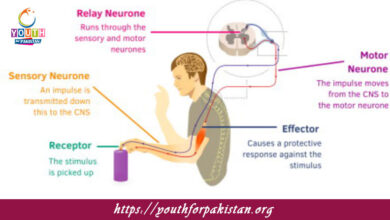Gregor John Mendel And His Work MDCAT MCQs with Answers

Welcome to the Gregor John Mendel And His Work MDCAT MCQs with Answers. In this post, we have shared Gregor John Mendel And His Work Multiple Choice Questions and Answers for PMC MDCAT 2024. Each question in MDCAT Biology offers a chance to enhance your knowledge regarding Gregor John Mendel And His Work MCQs in this MDCAT Online Test.
Gregor Mendel is known as the father of:
a) Evolution
b) Genetics
c) Microbiology
d) Ecology
Mendel’s pea plant experiments primarily investigated:
a) Inheritance of traits
b) Plant diseases
c) Photosynthesis
d) Soil fertility
Which of the following was NOT a trait studied by Mendel in pea plants?
a) Flower color
b) Seed shape
c) Leaf size
d) Pod color
Mendel’s Law of Segregation states that:
a) Alleles for different traits separate independently
b) Each individual has two alleles for each gene, which separate during gamete formation
c) Dominant alleles mask recessive alleles
d) Genes are inherited independently of one another
Mendel’s Law of Independent Assortment is best described by:
a) Alleles for different traits are inherited together
b) Alleles for different traits separate independently during gamete formation
c) Dominant traits are always expressed
d) Recessive traits are masked by dominant traits
Gregor Mendel conducted his experiments on pea plants at:
a) University of Vienna
b) University of Prague
c) University of Oxford
d) University of Cambridge
Mendel’s experiments were initially published in:
a) A journal of botany
b) A journal of zoology
c) A local agricultural magazine
d) A scientific journal titled “Proceedings of the Natural History Society”
In Mendel’s experiments, the F1 generation of a monohybrid cross showed:
a) A 1:2:1 genotypic ratio
b) A 3:1 phenotypic ratio
c) A 9:3:3:1 phenotypic ratio
d) All offspring with the dominant phenotype
Which of the following was a key feature of Mendel’s experimental design?
a) Use of a variety of plant species
b) Cross-pollination of plants with different traits
c) Observation of natural plant populations
d) Use of genetic markers in fruit flies
Mendel’s second law, the Law of Independent Assortment, was derived from his experiments with:
a) Single traits
b) Two traits
c) Three traits
d) Multiple traits
Mendel used the term “factor” to refer to:
a) Genes
b) Chromosomes
c) Alleles
d) DNA
Mendel’s work was largely ignored until:
a) The 1920s
b) The 1950s
c) The 1930s
d) The 1900s
Which of the following terms describes an organism that has two identical alleles for a particular trait?
a) Heterozygous
b) Homozygous
c) Dominant
d) Recessive
Mendel’s pea plant experiment involved which types of traits?
a) Qualitative traits
b) Quantitative traits
c) Continuous traits
d) Discrete traits
Mendel’s principle of dominance states that:
a) All traits are equally dominant
b) Some alleles are dominant and others are recessive
c) Recessive alleles are always expressed
d) Dominant traits are always inherited
Which of Mendel’s laws is demonstrated by a dihybrid cross?
a) Law of Segregation
b) Law of Independent Assortment
c) Law of Uniformity
d) Law of Dominance
The phenotypic ratio of the F2 generation in a dihybrid cross is:
a) 1:2:1
b) 3:1
c) 9:3:3:1
d) 1:1:1:1
In Mendel’s experiments, the term “F1 generation” refers to:
a) The first filial generation, offspring of the P generation
b) The second filial generation, offspring of the F1 generation
c) The parental generation
d) The third generation of plants
Mendel’s Law of Segregation was demonstrated by:
a) The separation of alleles during gamete formation
b) The random assortment of alleles during meiosis
c) The dominance of one allele over another
d) The equal distribution of alleles in gametes
The F2 generation of a monohybrid cross exhibits a phenotypic ratio of:
a) 1:1
b) 3:1
c) 9:3:3:1
d) 1:2:1
Mendel’s experimental plants were:
a) Arabidopsis
b) Maize
c) Pea plants
d) Drosophila
Which of the following was NOT one of the seven traits Mendel studied in pea plants?
a) Flower color
b) Seed texture
c) Plant height
d) Leaf shape
Mendel’s pea plant experiments were important because:
a) They provided the first evidence of gene linkage
b) They laid the foundation for the modern field of genetics
c) They disproved Darwin’s theory of evolution
d) They focused on human genetics
The Law of Uniformity states that:
a) All offspring of two homozygous parents will have the same phenotype
b) All offspring will have a 1:2:1 phenotypic ratio
c) Traits are inherited independently
d) Alleles for different traits are passed together
Which tool did Mendel use to track the inheritance of traits?
a) Microscope
b) Punnett square
c) Experimental crosses
d) Genetic markers
The Law of Segregation states that:
a) Each individual has two alleles for each gene
b) Each gamete receives both alleles for a gene
c) Alleles separate independently of one another
d) Dominant traits mask recessive traits
In Mendel’s experiments, when he crossed two homozygous plants for different traits, the F1 generation was:
a) Genotypically uniform
b) Phenotypically diverse
c) Genotypically diverse
d) Phenotypically uniform
Mendel’s work demonstrated that:
a) Traits are inherited randomly
b) Genes are inherited in predictable patterns
c) All traits are blended in offspring
d) Environmental factors influence genetic traits
Which type of cross did Mendel use to test the Law of Independent Assortment?
a) Monohybrid cross
b) Dihybrid cross
c) Test cross
d) Back cross
The F2 generation in a dihybrid cross shows a phenotypic ratio of:
a) 3:1
b) 9:3:3:1
c) 1:2:1
d) 1:1:1:1
Mendel’s experiments with pea plants involved:
a) Multiple crosses between different plant species
b) Only self-pollination of plants
c) Crosses between plants with different traits
d) The use of artificial selection
Which of Mendel’s laws is observed when a single gene controls a trait?
a) Law of Dominance
b) Law of Independent Assortment
c) Law of Segregation
d) Law of Uniformity
The concept of dominant and recessive traits was introduced by:
a) Charles Darwin
b) Gregor Mendel
c) James Watson
d) Francis Crick
Mendel’s use of statistical analysis in his experiments allowed him to:
a) Predict the genetic outcomes of crosses
b) Analyze the chemical structure of DNA
c) Identify genetic mutations
d) Sequence plant genomes
The principle of segregation was first formulated by:
a) Charles Darwin
b) Gregor Mendel
c) Watson and Crick
d) Thomas Morgan
Mendel’s experiments with pea plants involved:
a) Crosses between plants with both dominant and recessive traits
b) Only observing naturally occurring variations
c) Genetic modifications
d) Environmental manipulations
The study of heredity and variation was first systematically approached by:
a) Darwin
b) Mendel
c) Watson and Crick
d) Lamarck
The term “filial” in Mendel’s work refers to:
a) The parental generation
b) The first generation of offspring
c) The second generation of offspring
d) The generation before the parental generation
The ratio of dominant to recessive phenotypes in the F2 generation of a monohybrid cross is:
a) 1:2
b) 3:1
c) 9:3
d) 1:1
Mendel’s pea plant experiments were significant because they:
a) Showed the principles of genetic inheritance
b) Demonstrated the role of environment in genetics
c) Disproved Darwinian evolution
d) Focused on human genetics
The principle of inheritance Mendel described is based on:
a) Statistical analysis of trait inheritance
b) Direct observation of plant growth
c) Biochemical analysis
d) Genetic engineering
If you are interested to enhance your knowledge regarding Physics, Chemistry, Computer, and Biology please click on the link of each category, you will be redirected to dedicated website for each category.




